Pharmaceutical companies (“Pharma”) operate in a very complex environment – to begin with, their customer is usually referred to as “the patient” and it gets more complicated from there. The relationship between Pharma and the patient is not always a direct one, and whether or not the customer is “delighted” often depends on other parties in the mix. Other parties usually include the “Payer” and the “Provider,” and sometimes even the Pharmacist. Given all the players in this “P party” of patient care, should they try to delight customers? It really depends on how you define “delight.”
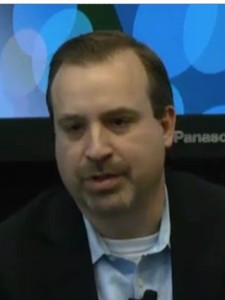 What it means to delight the customer
What it means to delight the customer
For Dennis Urbaniak, VP of US Diabetes for Sanofi, his patients have a serious chronic condition, so the "customer" doesn’t really even want to be his customer, and privacy is an issue as it relates to patient data and how and when you can engage with your customer.
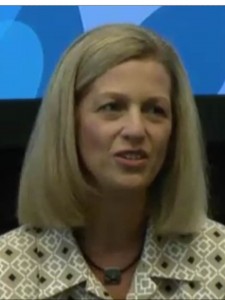 Dr. Linda Harpole, VP of Global Health Outcomes for GlaxoSmithKline, holds that traditional views of the patient for pharma would be from a regulatory standpoint, so it was about patient safety and efficacy, and ultimately the translation of that to your patients or providers.
Dr. Linda Harpole, VP of Global Health Outcomes for GlaxoSmithKline, holds that traditional views of the patient for pharma would be from a regulatory standpoint, so it was about patient safety and efficacy, and ultimately the translation of that to your patients or providers.
For Sam Malik, Managing Partner at Percipient, there’s a steep slope for pharma to actually “delight” it’s customers, 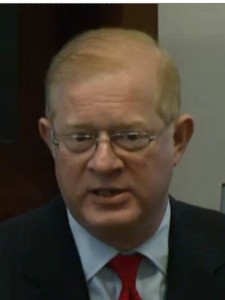 largely because we don’t really understand how the customer can be delighted. The “customer” for pharma is also the intermediary – whether its Medicare/Medicaid in the public sector or commercial health plans. And in his words, "we all know that insurance companies do not delight their customers one bit." Talk about an understatement.
largely because we don’t really understand how the customer can be delighted. The “customer” for pharma is also the intermediary – whether its Medicare/Medicaid in the public sector or commercial health plans. And in his words, "we all know that insurance companies do not delight their customers one bit." Talk about an understatement.
For Paulo Machado, CEO & Founder of Health Innovation Partners, the question of delighting customers for 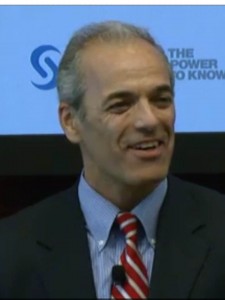 Pharma needs to be considered in light of the current restructuring of the health care system in the United States into an actual system, versus an industry. As a result, there’s a lot going on in terms of becoming patient-centered. Among other benefits, reform will address traditional hurdles to “delighting” customers, such as siloed data which can be addressed by the health exchanges.
Pharma needs to be considered in light of the current restructuring of the health care system in the United States into an actual system, versus an industry. As a result, there’s a lot going on in terms of becoming patient-centered. Among other benefits, reform will address traditional hurdles to “delighting” customers, such as siloed data which can be addressed by the health exchanges.
Becoming more patient-centric
Urbaniak believes that Pharma needs to get beyond the brand-centric world and learn about what drives patients' decisions. What are the communities they engage with? How do they spend their time and what are they interested in as people? His position is that Pharma has a chance as an industry to take a much more holistic view around the people and then orient their approaches to better satisfy some of their needs in ways that are relevant for them.
There is an industry-wide drive to become more patient-centric, even among regulators such as the FDA, according to Harpole. And that dialogue about patients is impacting all areas of Pharma, including clinical trials.
Some developments there may naturally foster a better connection between Pharma and the patient with the impetus now to look more holistically at what end points matter to the patients and to build that into the trial process. It seems natural that the patient will perceive the shift when the trial process involves talking with them about priority diseases to understand the end points that matter to them. Pharma may even help patients feel more vested in the process if they can potentially incorporate patient-reported outcomes as part of promoting and demonstrating the value of the medications.
The shift to dialogue engenders trust
The terms and conditions of the world we live in have changed, and more than ever, engagement with customers is a dialogue and not a broadcast. This applies to all industries, and the catalyst behind this shift is the advent of social media. Urbaniak shared that Sanofi now has a community manager, and his biggest challenge at the outset was to get his internal team to not think of it as just another channel to pump advertisements through. In his words, "people are tired of this one-way push at them." He further added:
"Pharma companies have to understand that because if they remain internally focused on just their brand – they will be bypassed by everyone. The one-way push will not engender trust. We have to rethink this idea of selling and marketing, and focus more on deeper insights and really understanding what people need. Doing that can help you better connect with your patients. Pharma companies that are having the [should we be in]social media debate are already five years behind the mark. And by the way, regulatory is not really an issue if you act the right way – you can satisfy the regulator and you could do a really good job of satisfying some of your potential customers."
The potential of patient data
No current discussion about this industry or patients can happen without consideration of healthcare reform underway due to the passage of the Affordable Care Act. Machado posed the question as it relates to the Payer engagement model being impacted by the "smarter-better-more data rich payer/institutional setting, considering they've been lacking data historically and how seeing a massive change with healthcare reform.
Malik sees promise in patient data, adding that the problem on the Pharma and the Payer side is that they are both traditionally afraid to get too much data on their patients and look at it really hard. He put it rather directly when he said:
"There is a strong fear of discovering inconvenient truths."
From his perspective, the Payer industry is transactionally focused on claims. On the other hand, Pharma is interested in patient data from payers because it’s the one way you can see them longitudinally. Success in harnessing data for better insights will depend on Pharma's ability to convince payers that they know something about their patients that would help them. Doing that requires positioning themselves as having a closer relationship with patients, and not necessarily one that’s adversarial to payers. The experience of other industries shows there is no better way to harness data for better insights than using predictive analytics, and for our increasingly online and social world, it's customer experience management and social media analytics.
Healthcare Reform catalyzes change
One of the biggest impacts of Healthcare Reform is what Machado calls "this massive shift in terms of how the system is going to get paid, transitioning from a fee for service model to one that’s based on the experience." and how people feel about the experience in healthcare. The impact on Payers and Providers is more explicit than is the case for Pharma, and it will certainly have an effect on the relationships with patients.
Urbaniak believes that one aspect of reform is clear regardless of where you sit or what your opinion is – everyone in the healthcare systems is going to have to demonstrate measurable "real-world" benefits of improvements. It's all about ROI, and it applies to the "commercial" side of Pharma as well. In his words, "we have to measure baselines within targeted populations, and then look at triple-aim ideas as a commercialization effect, and then essentially move from selling products to selling outcomes. "
Harpole also referenced the emphasis on ROI and illustrated how quality metrics and demonstrated outcomes can impact how an accountable care organization is compensated. Pharma itself has an obligation to continually learn where its medications best fit because data is limited when you go to market, and actual usage data provides valuable insights that can help healthcare become more efficient and improve quality. She sees a "tremendous opportunity" in turning all the data available into knowledge. I couldn't agree with her more.
In the context of healthcare reform, Malik cited the promise and the pitfalls of performance guarantee programs in how Pharma engages with payers. He specifically called attention to how sometimes it appears that pharma companies "aim too big in performance guarantee programs," and how sometimes they try to do too many clinical trials to try to prove too many things. To me it seems that this is one way of hedging against failure. He believes that in spite of that, Pharma will need to focus on producing more evidence (in the drug development process) and do it fairly early on. In his words, "if we can create more evidence to start with, we can have better claims and we can link our product pricing to the performance we can demonstrate in our claims." It seems clear enough - and it's probably way easier said than done, but considering the added emphasis on ROI throughout the process it is not optional for Pharma companies.
The power of the patient story
One point Malik made that resonates from a marketing perspective is that "it's about the patient and the better we are at discovering and patching together the patient story, the more powerful we will be in our marketing." He shared his perspective that Pharma has traditionally emphasized sales over marketing, and "to do it right, would require a greater push toward marketing prowess rather then sales prowess, which means being able to understand your consumer, being able to gather information from them."
For me, this idea of the patient story gets at the core of what all of the players in the“P party” in patient care need to be focusing on:
What is the patient story and what kind of ending will it have?
There is no question more important than that one, and what Pharma should realize is that imperative is not too different from what companies in all other industries are facing. The two major differences for Pharma are the regulatory framework and the high stakes for the patients - often facing life or death, or significant quality of life impacts. And yes, every patient has a different story, and for each patient their story is what matters most to them. Again - that's not too different a problem that a retailer faces today, or a bank, or hotel, manufacturer, and so on. In all cases, the empowered customer will gravitate toward the vendors that pay attention to them. Period.
There was some skepticism among these industry experts that Pharma could actually delight customers. And I think their skepticism is well-founded, but it's not entirely futile. To Malik's point about performance guarantee programs, there is risk in aiming "too high." And as Urbaniak put it very aptly, the patient often doesn't actually want to be the customer, so I don't think the question is a matter of whether they can delight the customer. I simply think it's a matter of focusing on factors that they can control, and even working to influence key factors that are out of their direct control, but can be influenced. While it may not rise to be described as "delight," it may enable outcomes that allow each patient to pursue their own version of "delight." And that's a goal that's both valid and valuable.
Putting the patient at the center of all business issues is always going to be the right answer because the patient is the one constant in the complex and ever-changing healthcare system. And the details of each story are in the patient data - not just therapeutic data, but a more holistic view that includes economic factors, lifestyle, life cycle and all the ways to describe the patient. Applying customer analytics to the data can also allow predictions about how the patient story ends. Who wouldn't want to know the ending of such an important story. I'm just saying...
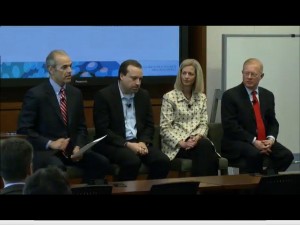
This panel of experts came together for the 10th annual SAS Health Care and Life Sciences Executive Conference at SAS world headquarters in Cary, NC.
This session was preceded by a presentation from Ed Gaffin, Director of Marketing Analytics at Walt Disney Parks and Resorts. When following a presentation from the undisputed world leader in delighting customers, it's no surprise that the question of how to delight customers loomed large in this discussion.
You can catch recordings of this and the other sessions at our On-demand Virtual Conference. This session was called "Patient Centricity Through the Life Science Continuum." Tune in and let us know what you think.
And as always, thank you for following!
